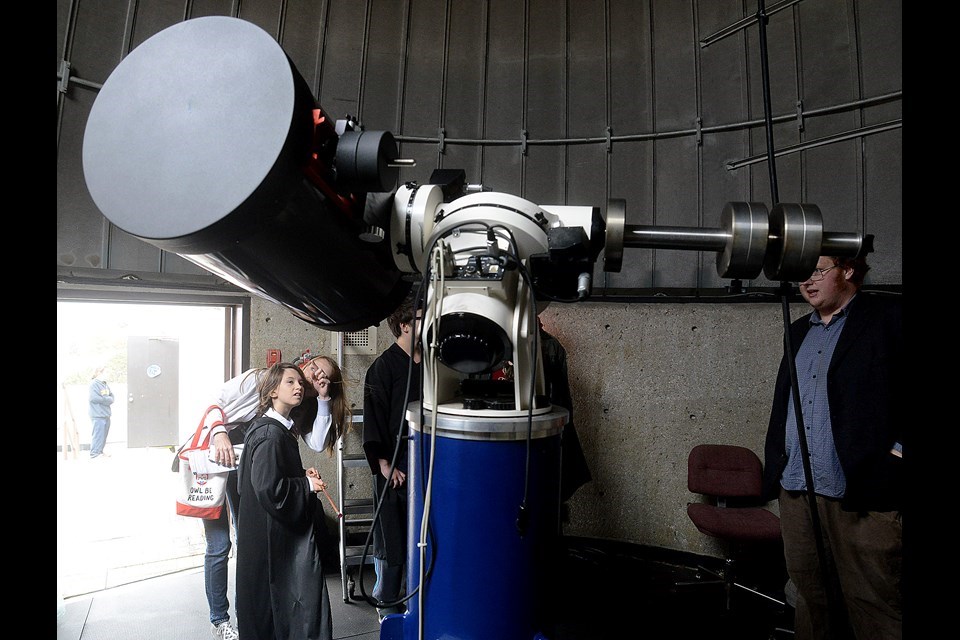"We have a few things planned for the eclipse event," says Eamonn Corrigan, who is hosting the event along with fellow U of G physics graduate students Andrew Harris and Scott Van Bommel.
The event takes place on the 7th floor of the MacNaughton Building (the elevator goes as far as the 5th floor) on Monday from 1 p.m. to 4 p.m. with the eclipse peaking around 2:30 p.m
It is a free drop-in event and people can stay as long as they want.
The observatory's main telescope will be able to show some detail on the surface of the sun, if there is any that day, such as sun spots.
The biggest advantage, Corrigan said, is that the event offers the opportunity to view the eclipse safely.
"I stress strongly that no one should try to view the eclipse without proper equipment. Just drop by the observatory and we have everything you need for safe viewing," he said.
"We think this is a great chance for public outreach. We love being able to share the wonders of the sky with members of the public. We also want to make sure that a safe viewing opportunity is available for everyone,' Corrigan said, stressing how dangerous it is to look at the sun directly without proper protection.
There was a similar event held a few years ago for the transit of Venus, another once in a lifetime celestial event which required sun protection.
The observatory also offers tours to the public during the evenings on an ongoing basis.
The last solar eclipse visible from this location was in 1979.
